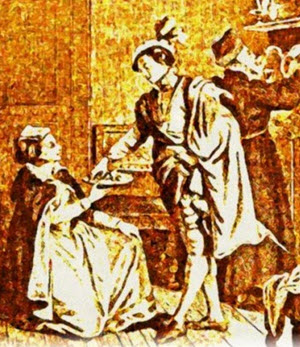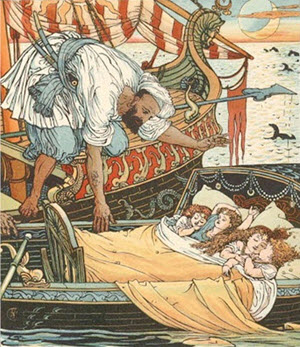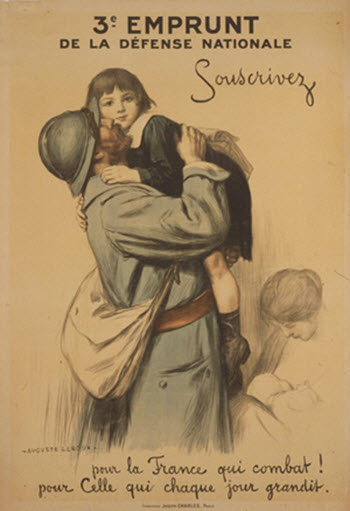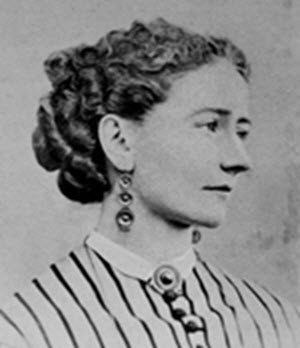 Prev
| Next
| Contents
Prev
| Next
| Contents
The Legends of the Jews
This is a collection of wonderful Jewish legends and folk tales.
PREFACE
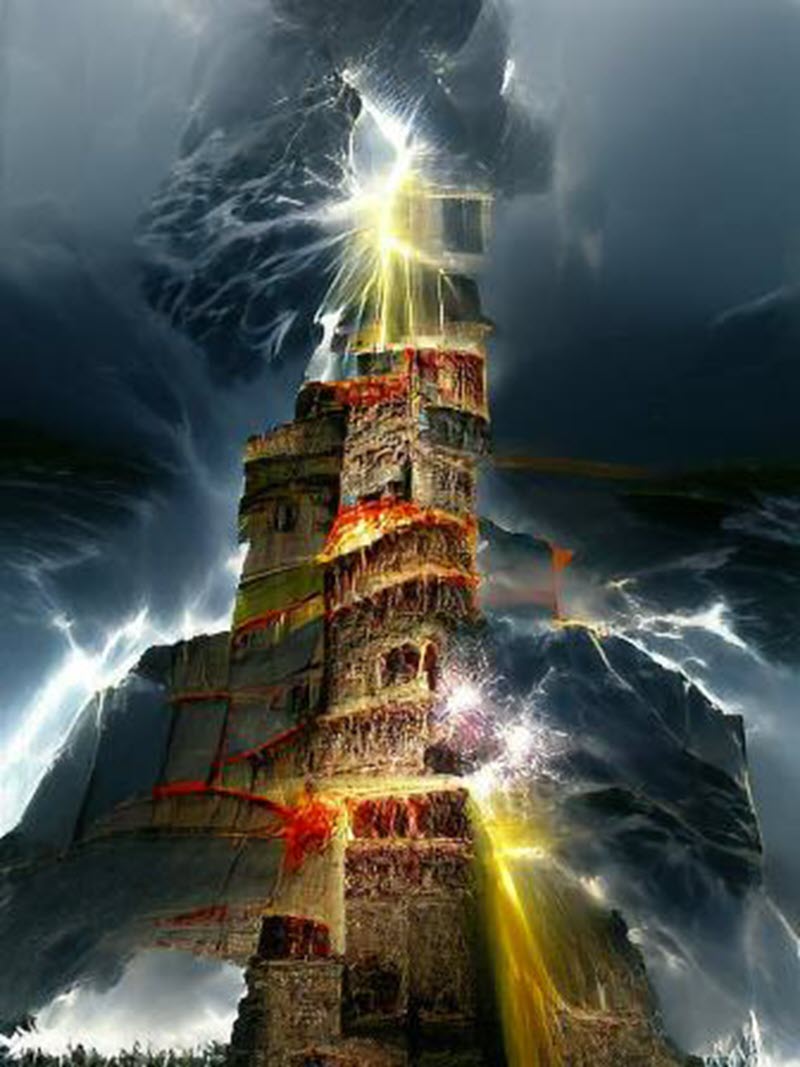
The Tower of Babel
The term Rabbinic was applied to the Jewish Literature of post-Biblical times by those who conceived the Judaism of the later epoch to be something different from the Judaism of the Bible, something actually opposed to it. Such observers held that the Jewish nation ceased to exist with the moment when its political independence was destroyed. For them the Judaism of the later epoch has been a Judaism of the Synagogue, the spokesmen of which have been the scholars, the Rabbis. And what this phase of Judaism brought forth has been considered by them to be the product of the schools rather than the product of practical, pulsating life. Poetic phantasmagoria, frequently the vaporings of morbid visionaries, is the material out of which these scholars construct the theological system of the Rabbis, and fairy tales, the spontaneous creations of the people, which take the form of sacred legend in Jewish literature, are denominated the Scriptural exegesis of the Rabbis, and condemned incontinently as nugae rabbinorum.
As the name of a man clings to him, so men cling to names. For the primitive savage the name is part of the essence of a person or thing, and even in the more advanced stages of culture, judgments are not always formed in agreement with facts as they are, but rather according to the names by which they are called. The current estimate of Rabbinic Literature is a case in point. With the label Rabbinic later ages inherited from former ages a certain distorted view of the literature so designated. To this day, and even among scholars that approach its investigation with unprejudiced minds, the opinion prevails that it is purely a learned product. And yet the truth is that the most prominent feature of Rabbinic Literature is its popular character.
The school and the home are not mutually opposed to each other in the conception of the Jews. They study in their homes, and they live in their schools. Likewise there is no distinct class of scholars among them, a class that withdraws itself from participation in the affairs of practical life. Even in the domain of the Halakah, the Rabbis were not so much occupied with theoretic principles of law as with the concrete phenomena of daily existence. These they sought to grasp and shape. And what is true of the Halakah is true with greater emphasis of the Haggadah, which is popular in the double sense of appealing to the people and being produced in the main by the people. To speak of the Haggadah of the Tannaim and Amoraim is as far from fact as to speak of the legends of Shakespeare and Scott. The ancient authors and their modern brethren of the guild alike elaborate legendary material which they found at hand.
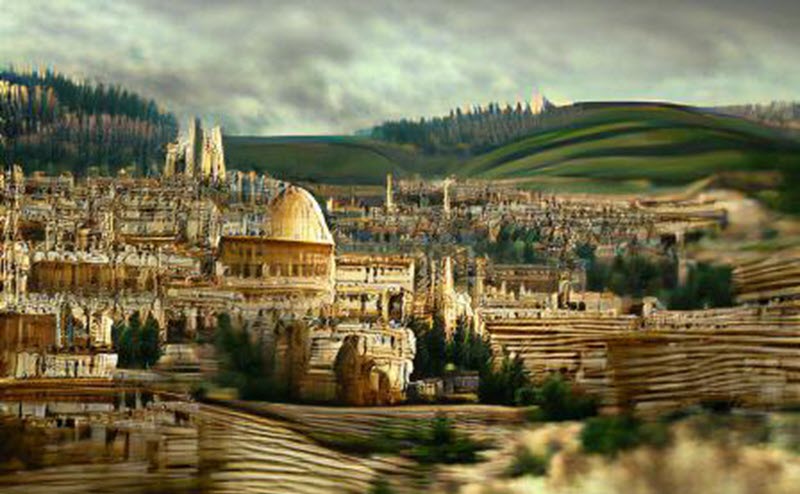
Myths and Legends of the Jews
It has been held by some that the Haggadah contains no popular legends, that it is wholly a factitious, academic product. A cursory glance at the pseudepigraphic literature of the Jews, which is older than the Haggadah literature by several centuries, shows how untenable this view is. That the one literature should have drawn from the other is precluded by historical facts. At a very early time the Synagogue disavowed the pseudepigraphic literature, which was the favorite reading matter of the sectaries and the Christians. Nevertheless the inner relation between them is of the closest kind. The only essential difference is that the Midrashic form prevails in the Haggadah, and the parenetic or apocalyptic form in the pseudepigrapha. The common element must therefore depart from the Midrash on the one hand and from parenesis on the other.
Folklore, fairy tales, legends, and all forms of story telling akin to these are comprehended, in the terminology of the post-Biblical literature of the Jews, under the inclusive description Haggadah, a name that can be explained by a circumlocution, but cannot be translated. Whatever it is applied to is thereby characterized first as being derived from the Holy Scriptures, and then as being of the nature of a story. And, in point of fact, this dualism sums up the distinguishing features of Jewish Legend. More than eighteen centuries ago the Jewish historian Josephus observed that "though we be deprived of our wealth, of our cities, or of the other advantages we have, our law continues immortal." The word he meant to use was not law, but Torah, only he could not find an equivalent for it in Greek. A singer of the Synagogue a thousand years after Josephus, who expressed his sentiments in Hebrew, uttered the same thought: "The Holy City and all her daughter cities are violated, they lie in ruins, despoiled of their ornaments, their splendor darkened from sight. Naught is left to us save one eternal treasure alone--the Holy Torah." The sadder the life of the Jewish people, the more it felt the need of taking refuge in its past. The Scripture, or, to use the Jewish term, the Torah, was the only remnant of its former national independence, and the Torah was the magic means of making a sordid actuality recede before a glorious memory. To the Scripture was assigned the task of supplying nourishment to the mind as well as the soul, to the intellect as well as the imagination, and the result is the Halakah and the Haggadah.
The fancy of the people did not die out in the post-Biblical time, but the bent of its activity was determined by the past.
Men craved entertainment in later times as well as in the earlier, only instead of resorting for its subject-matter to what happened under their eyes, they drew from the fountain-head of the past. The events in the ancient history of Israel, which was not only studied, but lived over again daily, stimulated the desire to criticize it. The religious reflections upon nature laid down in the myths of the people, the fairy tales, which have the sole object of pleasing, and the legends, which are the people's verdict upon history--all these were welded into one product. The fancy of the Jewish people was engaged by the past reflected in the Bible, and all its creations wear a Biblical hue for this reason. This explains the peculiar form of the Haggadah.
But what is spontaneously brought forth by the people is often preserved only in the form impressed upon it by the feeling and the thought of the poet, or by the speculations of the learned. Also Jewish legends have rarely been transmitted in their original shape. They have been perpetuated in the form of Midrash, that is, Scriptural exegesis. The teachers of the Haggadah, called Rabbanan d'Aggadta in the Talmud, were no folklorists, from whom a faithful reproduction of legendary material may be expected. Primarily they were homilists, who used legends for didactic purposes, and their main object was to establish a close connection between the Scripture and the creations of the popular fancy, to give the latter a firm basis and secure a long term of life for them.
One of the most important tasks of the modern investigation of the Haggadah is to make a clean separation between the original elements and the later learned additions. Hardly a beginning has been made in this direction. But as long as the task of distinguishing them has not been accomplished, it is impossible to write out the Biblical legends of the Jews without including the supplemental work of scholars in the products of the popular fancy.
In the present work, "The Legends of the Jews," I have made the first attempt to gather from the original sources all Jewish legends, in so far as they refer to Biblical personages and events, and reproduce them with the greatest attainable completeness and accuracy. I use the expression Jewish, rather than Rabbinic, because the sources from which I have levied contributions are not limited to the Rabbinic literature. As I expect to take occasion elsewhere to enter into a description of the sources in detail, the following data must suffice for the present.
The works of the Talmudic Midrashic literature are of the first importance. Covering the period from the second to the fourteenth century, they contain the major part of the Jewish legendary material. Akin to this in content if not always in form is that derived from the Targumim, of which the oldest versions were produced not earlier than the fourth century, and the most recent not later than the tenth. The Midrashic literature has been preserved only in fragmentary form. Many Haggadot not found in our existing collections are quoted by the authors of the Middle Ages. Accordingly, a not inconsiderable number of the legends here printed are taken from medieval Bible commentators and homilists. I was fortunate in being able to avail myself also of fragments of Midrashim of which only manuscript copies are extant.
The works of the older Kabbalah are likewise treasuries of quotations from lost Midrashim, and it was among the Kabbalists, and later among the Hasidim, that new legends arose. The literatures produced in these two circles are therefore of great importance for the present purpose.
Furthermore, Jewish legends can be culled not from the writings of the Synagogue alone; they appear also in those of the Church. Certain Jewish works repudiated by the Synagogue were accepted and mothered by the Church. This is the literature usually denominated apocryphal-pseudepigraphic. From the point of view of legends, the apocryphal books are of subordinate importance, while the pseudepigrapha are of fundamental value. Even quantitatively the latter are an imposing mass. Besides the Greek writings of the Hellenist Jews, they contain Latin, Syrian, Ethiopic, Aramean, Arabic, Persian, and Old Slavic products translated directly or indirectly from Jewish works of Palestinian or Hellenistic origin. The use of these pseudepigrapha requires great caution. Nearly all of them are embellished with Christian interpolations, and in some cases the inserted portions have choked the original form so completely that it is impossible to determine at first sight whether a Jewish or a Christian legend is under examination. I believe, however, that the pseudepigraphic material made use of by me is Jewish beyond the cavil of a doubt, and therefore it could not have been left out of account in a work like the present.
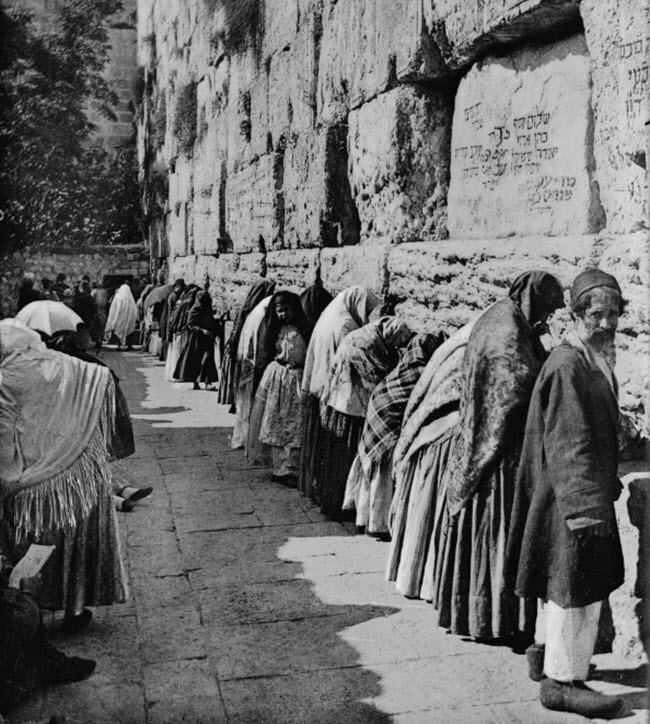
The Waling Wall, c. 1900
However, in the appreciation of Jewish Legends, it is the Rabbinic writers that should form the point of departure, and not the pseudepigrapha. The former represent the main stream of Jewish thought and feeling, the latter only an undercurrent. If the Synagogue cast out the pseudepigrapha, and the Church adopted them with a great show of favor, these respective attitudes were not determined arbitrarily or by chance. The pseudepigrapha originated in circles that harbored the germs from which Christianity developed later on. The Church could thus appropriate them as her own with just reason.
In the use of some of the apocryphal and pseudepigraphic writings, I found it expedient to quote the English translations of them made by others, in so far as they could be brought into accord with the general style of the book, for which purpose I permitted myself the liberty of slight verbal changes. In particulars, I was guided, naturally, by my own conception of the subject, which the Notes justify in detail.
Besides the pseudepigrapha there are other Jewish sources in Christian garb. In the rich literature of the Church Fathers many a Jewish legend lies embalmed which one would seek in vain in Jewish books. It was therefore my special concern to use the writings of the Fathers to the utmost.
The luxuriant abundance of the material to be presented made it impossible to give a verbal rendition of each legend. This would have required more than three times the space at my disposal. I can therefore claim completeness for my work only as to content. In form it had to suffer curtailment. When several conflicting versions of the same legend existed, I gave only one in the text, reserving the other one, or the several others, for the Notes, or, when practicable, they were fused into one typical legend, the component parts of which are analyzed in the Notes. In other instances I resorted to the expedient of citing one version in one place and the others in other appropriate places, in furtherance of my aim, to give a smooth presentation of the matter, with as few interruptions to the course of the narrative as possible. For this reason I avoided such transitional phrases as "Some say," "It has been maintained," etc. That my method sometimes separates things that belong together cannot be considered a grave disadvantage, as the Index at the end of the work will present a logical rearrangement of the material for the benefit of the interested student. I also did not hesitate to treat of the same personage in different chapters, as, for instance, many of the legends bearing upon Jacob, those connected with the latter years of the Patriarch, do not appear in the chapter bearing his name, but will be found in the sections devoted to Joseph, for the reason that once the son steps upon the scene, he becomes the central figure, to which the life and deeds of the father are subordinated. Again, in consideration of lack of space the Biblical narratives underlying the legends had to be omitted--surely not a serious omission in a subject with which widespread acquaintance may be presupposed as a matter of course.
As a third consequence of the amplitude of the material, it was thought advisable to divide it into several volumes. The references, the explanations of the sources used, and the interpretations given, and, especially, numerous emendations of the text of the Midrashim and the pseudepigrapha, which determined my conception of the passages so emended, will be found in the last volume, the fourth, which will contain also an Introduction to the History of Jewish Legends, a number of Excursuses, and the Index.
As the first three volumes are in the hands of the printer almost in their entirety, I venture to express the hope that the whole work will appear within measurable time, the parts following each other at short intervals.
Latest update November 21, 2021: Added a number of abstract illustrations to enhance the text. Also repositioned ads and some other page elements.
Volume 1 | Volume 2 | Volume 3 | Volume 4

